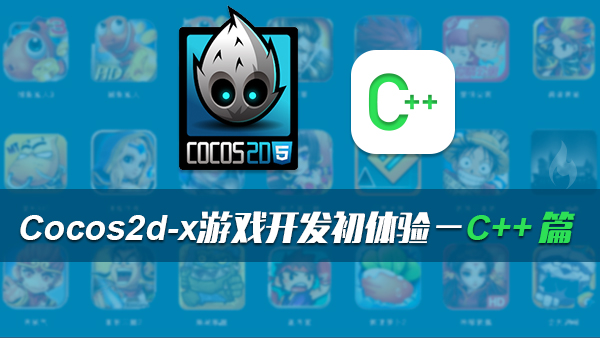对于ORM框架而言,数据源的组织是一个非常重要的一部分,这直接影响到框架的性能问题。本文将通过对MyBatis框架的数据源结构进行详尽的分析,并且深入解析MyBatis的连接池。
本文首先会讲述MyBatis的数据源的分类,然后会介绍数据源是如何加载和使用的。紧接着将分类介绍UNPOOLED、POOLED和JNDI类型的数据源组织;期间我们会重点讲解POOLED类型的数据源和其实现的连接池原理。
以下是本文的组织结构:
一、MyBatis数据源DataSource分类
二、数据源DataSource的创建过程
三、 DataSource什么时候创建Connection对象
四、不使用连接池的UnpooledDataSource
五、为什么要使用连接池?
六、使用了连接池的PooledDataSource
一、MyBatis数据源DataSource分类
MyBatis数据源实现是在以下四个包中:

image.png
MyBatis把数据源DataSource分为三种:
1、UNPOOLED 不使用连接池的数据源
2、POOLED 使用连接池的数据源
3、JNDI 使用JNDI实现的数据源
相应地,MyBatis内部分别定义了实现了java.sql.DataSource接口的UnpooledDataSource,PooledDataSource类来表示UNPOOLED、POOLED类型的数据源。 如下图所示:

image.png
二、数据源DataSource的创建过程
MyBatis数据源DataSource对象的创建发生在MyBatis初始化的过程中。下面让我们一步步地了解MyBatis是如何创建数据源DataSource的。
在mybatis的XML配置文件中(spring-jdbc.xml),使用元素来配置数据源:
<bean id="dataSource" class="com.xxxxx.jdbc.XxxxDataSource" type="POOLED"
init-method="init" destroy-method="close">
<property name="poolType" value="tomcat-jdbc" />
<property name="minPoolSize" value="5" />
<property name="maxPoolSize" value="20" />
<property name="initialPoolSize" value="5" />
<property name="checkoutTimeout" value="1000" />
<property name="connectionInitSql" value="set names utf8mb4" />
<property name="lazyInit" value="${jdbc_lazyinit}" />
<!--每60秒运行一次空闲连接回收器
<property name="timeBetweenEvictionRunsMillis" value="60000"/>-->
<!--池中的连接空闲180秒后被回收-->
<property name="minEvictableIdleTimeMillis" value="180000"/>
<property name="socketTimeout" value="120000"/>
</bean>MyBatis在初始化时,解析此文件,根据的type属性来创建相应类型的的数据源DataSource,即:
type=”POOLED” :MyBatis会创建PooledDataSource实例
type=”UNPOOLED” :MyBatis会创建UnpooledDataSource实例
type=”JNDI” :MyBatis会从JNDI服务上查找DataSource实例,然后返回使用
顺便说一下,MyBatis是通过工厂模式来创建数据源DataSource对象的,MyBatis定义了抽象的工厂接口:org.apache.ibatis.datasource.DataSourceFactory,通过其getDataSource()方法返回数据源DataSource:
定义如下:
public interface DataSourceFactory {
void setProperties(Properties props);
//生产DataSource
DataSource getDataSource();
}上述三种不同类型的type,则有对应的以下dataSource工厂:
POOLED PooledDataSourceFactory
UNPOOLED UnpooledDataSourceFactory
JNDI JndiDataSourceFactory
其类图如下所示:

image.png
MyBatis创建了DataSource实例后,会将其放到Configuration对象内的Environment对象中, 供以后使用。
三、 DataSource什么时候创建Connection对象
当我们需要创建SqlSession对象并需要执行SQL语句时,这时候MyBatis才会去调用dataSource对象来创建java.sql.Connection对象。也就是说,java.sql.Connection对象的创建一直延迟到执行SQL语句的时候。
比如,我们有如下方法执行一个简单的SQL语句:
String resource = "mybatis-config.xml";
InputStream inputStream = Resources.getResourceAsStream(resource);
SqlSessionFactory sqlSessionFactory = new SqlSessionFactoryBuilder().build(inputStream);
SqlSession sqlSession = sqlSessionFactory.openSession();
sqlSession.selectList("SELECT * FROM STUDENTS");前4句都不会导致java.sql.Connection对象的创建,只有当第5句sqlSession.selectList("SELECT * FROM STUDENTS"),才会触发MyBatis在底层执行下面这个方法来创建java.sql.Connection对象:
protected void openConnection() throws SQLException { if (log.isDebugEnabled()) { log.debug("Opening JDBC Connection");
}
connection = dataSource.getConnection(); if (level != null) {
connection.setTransactionIsolation(level.getLevel());
}
setDesiredAutoCommit(autoCommmit);
}而对于DataSource的UNPOOLED的类型的实现-UnpooledDataSource是怎样实现getConnection()方法的呢?请看下一节。
四、不使用连接池的UnpooledDataSource
当 的type属性被配置成了”UNPOOLED”,MyBatis首先会实例化一个UnpooledDataSourceFactory工厂实例,然后通过.getDataSource()方法返回一个UnpooledDataSource实例对象引用,我们假定为dataSource。
使用UnpooledDataSource的getConnection(),每调用一次就会产生一个新的Connection实例对象。
UnPooledDataSource的getConnection()方法实现如下:
/**
* UnpooledDataSource的getConnection()实现
*/
public Connection getConnection() throws SQLException { return doGetConnection(username, password);
}
private Connection doGetConnection(String username, String password) throws SQLException { //封装username和password成properties
Properties props = new Properties(); if (driverProperties != null) {
props.putAll(driverProperties);
} if (username != null) {
props.setProperty("user", username);
} if (password != null) {
props.setProperty("password", password);
} return doGetConnection(props);
}
/*
* 获取数据连接
*/
private Connection doGetConnection(Properties properties) throws SQLException { //1.初始化驱动
initializeDriver(); //2.从DriverManager中获取连接,获取新的Connection对象
Connection connection = DriverManager.getConnection(url, properties); //3.配置connection属性
configureConnection(connection); return connection;
}如上代码所示,UnpooledDataSource会做以下事情:
初始化驱动: 判断driver驱动是否已经加载到内存中,如果还没有加载,则会动态地加载driver类,并实例化一个Driver对象,使用DriverManager.registerDriver()方法将其注册到内存中,以供后续使用。
创建Connection对象: 使用DriverManager.getConnection()方法创建连接。
配置Connection对象: 设置是否自动提交autoCommit和隔离级别isolationLevel。
返回Connection对象。
上述的序列图如下所示:

image.png
总结:从上述的代码中可以看到,我们每调用一次getConnection()方法,都会通过DriverManager.getConnection()返回新的java.sql.Connection实例。
五、为什么要使用连接池?
1. 创建一个java.sql.Connection实例对象的代价
首先让我们来看一下创建一个java.sql.Connection对象的资源消耗。我们通过连接Oracle数据库,创建创建Connection对象,来看创建一个Connection对象、执行SQL语句各消耗多长时间。代码如下:
public static void main(String[] args) throws Exception{
String sql = "select * from hr.employees where employee_id < ? and employee_id >= ?";
PreparedStatement st = null;
ResultSet rs = null;
long beforeTimeOffset = -1L; //创建Connection对象前时间
long afterTimeOffset = -1L; //创建Connection对象后时间
long executeTimeOffset = -1L; //创建Connection对象后时间
Connection con = null;
Class.forName("oracle.jdbc.driver.OracleDriver");
beforeTimeOffset = new Date().getTime();
System.out.println("before:\t" + beforeTimeOffset);
con = DriverManager.getConnection("jdbc:oracle:thin:@127.0.0.1:1521:xe", "louluan", "123456");
afterTimeOffset = new Date().getTime();
System.out.println("after:\t\t" + afterTimeOffset);
System.out.println("Create Costs:\t\t" + (afterTimeOffset - beforeTimeOffset) + " ms");
st = con.prepareStatement(sql); //设置参数
st.setInt(1, 101);
st.setInt(2, 0); //查询,得出结果集
rs = st.executeQuery();
executeTimeOffset = new Date().getTime();
System.out.println("Exec Costs:\t\t" + (executeTimeOffset - afterTimeOffset) + " ms");
}上述程序的执行结果为:

image.png
作者:消失er
链接:https://www.jianshu.com/p/45c1f4691c72

 随时随地看视频
随时随地看视频
